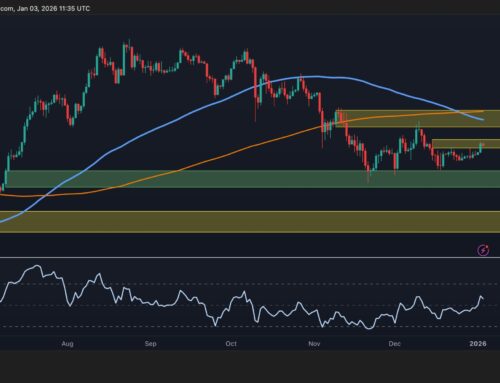5 strategies to build confidence while investing in the stock market
April 24, 2025
-
Many Americans are intimidated by the stock market, Bankrate surveys have found.
-
Learning about stocks and how they fit into your overall financial plan can help you gain confidence as an investor.
-
Stock market volatility is to be expected, so prepare yourself for it before you start investing.
The stock market is one of the best places to invest for the long term, but many people are intimidated to start investing. Stocks can be volatile, which can be frightening for even the most experienced investors, but they’ve provided some of the highest long-term returns and play a key role in achieving long-term financial goals.
Intimidation was a top reason given by Americans who didn’t choose stocks as their favorite long-term investment (21 percent), according to Bankrate’s Long-Term Investment Survey. Women identified intimidation at an even higher rate (23 percent) than men (15 percent) for why they didn’t prefer investing in stocks.
This fear could be a key reason why some aren’t investing in stocks at all. In the past year, just 33 percent of men with a strong financial upbringing invested in the stock market compared to 25 percent of women with a strong financial upbringing, Bankrate’s Financial Habits Survey found.
Here are five ways you can build confidence investing in the stock market.
One of the best ways to get your head around investing in the stock market is to develop an overall financial plan. This will include thinking about your short and long-term goals, and how you’ll need to invest in order to achieve them. You may want to work with a financial advisor to make sure all your bases are covered.
Stocks are a good fit for the long-term because of their strong track record of high returns, but their volatility makes them a poor choice for short-term goals. Think about how it might feel to be ready to make a down payment on a house, only to see 20 percent of your money disappear because you had it invested in stocks.
Conversely, a 20 percent decline in stocks when retirement is still decades away isn’t that big of a deal. Sure, no one likes to see their portfolio decline, but knowing how stocks fit into your overall plan can help you navigate market downturns and gain confidence in your investing strategy.
Any subject can be intimidating if you don’t know much about it. Educating yourself and familiarizing yourself with how the stock market works can help you become more confident over time.
This lack of education and experience could explain why fewer women invest in stocks today than men.
The stock market is often portrayed as a fast-paced and high-risk environment in movies and TV shows, which it can be for some. But stocks have actually proven to be one of the safest long-term investments and have helped investors grow their wealth and considerably outpace inflation.
Check out Bankrate’s list of the best investment books for beginners to learn more.
Part of what can make the stock market intimidating is the frenzy of activity that seems to be taking place at all times. Prices flash green or red every second the market is open, which can sometimes make it feel like you should always be doing something.
But it’s important to remember that stocks aren’t just prices on a screen. They represent actual ownership stakes in real businesses that typically generate earnings for their shareholders. What a stock is worth depends mostly on the earnings a company will generate over its remaining life.
It might be helpful to think of other financial assets and compare them to how people sometimes react to stocks.
If you owned a farm or a home that you rented out, you wouldn’t get a quote on it every second of the day like you do with stocks. But if someone offered to buy your farm at one price and you declined the offer, and they came back the next day and offered 20 percent less, you wouldn’t jump and say “Yes, please just take it!” But that’s how many people feel when it comes to stocks. They think “the market” knows something they don’t.
Always remember that stocks are just stakes in actual businesses. As the famed investor Ben Graham once said, “In the short run, the stock market is a voting machine. But in the long run, it is a weighing machine.”
Another way to build confidence investing in stocks is to diversify your investments. By holding a wide selection of stocks across many different industries, you reduce your portfolio’s reliance on a single stock or industry for returns.
One easy way to hold a diversified basket of stocks is through index funds that track the performance of stock market indexes such as the S&P 500. These funds can be purchased at very low costs, which means more of the return ends up in your pocket instead of the fund company’s.
If you do take the index fund approach, be sure the fund you’re purchasing tracks a broadly diversified index. There are many indexes that track particular industries, which wouldn’t meet the diversification needs you’re likely looking for. If your fund holds nothing but tech stocks, you aren’t diversified enough.
One way to handle the volatility of the stock market is to just expect it from the beginning. Don’t think that you’ve picked the perfect time to invest and it will only be clear sailing going forward. Volatility will happen, and it’s part of why stocks can be so rewarding over the long-term.
The thing about stock market volatility is that it always seems to come as a surprise, which can be frightening to investors. There’s usually some new risk that has caused investors to sell and can make you think you should too. But if you’re going to be a long-term investor in stocks, it’s better to just adopt the mindset that “there will be surprises.” Preparing for what that volatility will feel like could help you navigate it better when it arrives.
Search
RECENT PRESS RELEASES
Related Post



